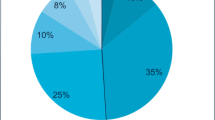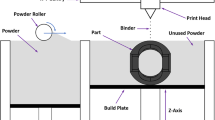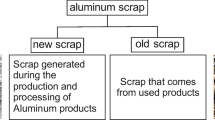Abstract
This paper presents a novel approach of a smart shortened material loop for producing second-life metallic components by saving a significant amount of energy and CO2 emissions. The focus is on metallic components and manufacturing chains based on adapted forming technologies. Sourcing and using secondary semi-finished products instead of virgin metallic materials facilitates the omission of process steps, such as iron smelting, steel making, continuous casting, hot and cold rolling, which involve the highest energy consumption and the highest CO2 emissions. Besides the positive impacts on sustainability, there are still scientific and technological challenges. One challenge lies in matching providers of secondary semi-finished material to market needs; the other comprises engineering the forming process chain while some material characteristics are not clearly specified or vary in a wide range. In contrast to the heavily restricted properties of virgin material, the characteristics of secondary semi-finished materials vary in a wider range and need to be elaborated. In the end, a new component will be produced, differing in design, function, and properties from conventional, single-life cycle products. Therefore, this paper introduces a novel, circular material loop for metals. The paper finishes with a short concept note on digital material and product passports to store and provide the required information on properties.
You have full access to this open access chapter, Download conference paper PDF
Similar content being viewed by others
Keywords
1 The reProd® Approach
1.1 Metallic Cycle and the Idea of reProd®
This paper describes the latest developments in production technologies within the scope of sustainable material loops. The focus lies on metal parts and components and on forming technologies. The Fraunhofer Institute for Machine Tools and Forming Technologies focuses on resource efficiency in industrial production environments. Material efficiency primarily means manufacturing as much as possible from raw materials. From an ecological point of view and inspired by nature, this paradigm should be shifted to holistic material effectiveness by choosing raw materials which are easy to reuse, remanufacture and recycle. There are several ways to use materials as intensively as possible. Figure 1 shows four paths between “re-using the product as it is” and “material recycling focusing on metallic cycles”. On the left side of the pyramid, the level of maintained value increases from bottom to top, while on the right side, the level of recycling losses and efforts decrease.
Beside numerous other materials, metals are a type of permanent material with high recyclability [1]. However, metallurgical processes require an enormous amount of energy, causing the emission of greenhouse gases, in particular CO2. To stop or at least to lower the impact on climate change, it is necessary to reduce the CO2 footprint significantly, even though the market volumes for aluminium and steel are still growing. The WellMet2050 [1] program addressed four themes to overcome this dilemma:
-
Theme 1: Reusing metal without melting
-
Theme 2: Less metal, same service
-
Theme 3: Using metal products more intensively and for a more extended period
-
Theme 4: Managing heat and shortening supply chains
1.2 The reProd® Approach
The analysis of today’s economy shows a predominantly linear structure also known as cradle to grave. This recycling type is characterized by a high fraction of disposal, as shown in Fig. 2 (left). In contrast, the reProd® approach illustrates an obviously smaller fraction of disposal, see Fig. 2 (right). However, the main difference is a shortened loop from product to semi-finished product to new components and new products. In this context, new means another product with a different function. The new cycle is based on obtaining semi-finished products out of used products and processing them directly without the detour of scrap and the related recycling effort.
The new cycle, called the reProd® cycle, represents an ideal resource autarkic production and material cycle based on secondary semi-finished products. Shortening the common metallic cycle offers a significant potential for improving sustainability while skipping the most energy-consuming and CO2-emitting processes. Figure 3 shows the smart shortened cycle.
Material cycles: today’s cycle with small amount of cycling and large fraction on disposal (left) and the reProd®-cycle [4] closed on semi-finished product level (right) as the highest loop after reuse and a less destructive recycling compared to the common material recycling.
Figure 4 shows the estimated exergy flow map for a steel product by Allwood [2], representing the enormous losses. The reProd® route extends the figure to demonstrate the potential for reducing the environmental impact and the challenge for sustainability.
Estimated exergy flow map for sheet steel products [2] extended by the reProd® cycle illustrates the significant reduction of losses.
Table 1 lists representative figures for three analysed steel routes to underline this potential. Compared to the primary steel route, the reProd® approach offers an 84% reduction in energy consumption and an 82% reduction in CO2 emissions. Even compared to the primary steel route, there still is a 65% reduction in energy consumption and a 63% reduction in CO2 emissions.
1.3 The reProd®-cycle
The reProd® cycle represents a cradle-to-cradle (C2C) cycle. Furthermore, the new approach is a paradigm shift from waste to resource management called”non-destructive recycling”. A comparison of the published circular economy cycles (shown in Fig. 5) with the proposed cycle reveals several differences. Besides reducing energy consumption and emissions, it allows the manufacturing of new products with changed functionalities maintaining the highest value-added level.
Circular economy cycles based on the Ellen MacArthur Foundation extended by reProd® cycle [3]
Sharing products, repairing them, and refurbishing them means using the same products as long as possible, maybe with software updates. This approach is quite opposite to our current consumer society. The reProd® cycle offers a way to overcome this drawback and market barrier; therefore, it represents a new cycle different from the known ones [3].
1.4 Feasibility Studies
Regarding research and development in a circular economy, there are several options to open the loop of a further product cycle. It is substantial to start with an eco-design or a circular product design, as described by Hollander [4]. It takes a period of at least one cycle to realize one of these designs and obtain feedback. Another option consists of using what is already available in a scrap yard and starting the learning process there. Several demonstration examples are manufactured to prove the idea of resource autarkic cycles and to show its feasibility. Figure 6 presents the cycle for sheet metal parts. It starts with cutting blanks from car roofs at scrap yards. The roofs are trimmed, and some are cleaned by removing coating and adhesives. After preparation, a hydroforming process was chosen to form the desired shape of a seat- and back-panel of a design chair (Hydra). Even the coloured panels could be formed to the desired shape without colour loss, as shown in Fig. 6 [5].
Process chain from scrap yard (top left) to obtain semi-finished products, trimming and preparation of car roofs (top centre), result of hydroforming operation and finished design chair (top right) and used drive shaft (bottom left) as secondary semi-finished part for bulk metal forming (bottom centre) to realize high-performance screws (bottom right) for application in wind turbines.
In order to open up the enormous potential for sustainability, however, it is essential to provide or create the required information. For the engineering process, it is necessary to know the material condition of the secondary semi-finished products to design the production steps leading the way to the second life cycle. The process design is based on forming simulation, which requires detailed description of the material behaviour. The assessment of the currently unknown or at least uncertain material properties, such as strength and residual formability, are presented and discussed below.
2 Engineering and Processing Secondary Semi-finished Products into New Parts
Metalworking and the related process development is a well-established and highly mature branch with broad industrial applications. At the same time, a high level of specialization and a complex process chain exists in the development of the forming processes. In particular, this includes finite element (FE) based engineering.
The impact on the changed material must be regarded flawlessly in the CAE workflow when aiming at economically applying secondary finished products as a replacement for conventional virgin materials. Thus, changes have to be identified and values need to be quantified. Due to the diverse nature of secondary semi-finished products, existing uncertainties need at least to be estimated by confidence intervals.
2.1 Geometric Properties
The variety in geometric appearance of secondary semi-finished products is obvious. Using the example of a sheet metal component, the potentially complex 3D shape, the trim line geometry and locally distributed sheet metal thickness pose a strong contrast to virgin material, which comprises a homogeneous, flat and regularly edged sheet.
According to the state of the art, the 3D shape can be recaptured, and local material thinning could be estimated based on, e.g., a one-step solver unfolding the blank. This process generates a complex dataset and comprises a remarkable effort for modelling the initial forming operation, which is detrimental to the economic competitiveness of the material. Thus, a generalized approach is required, representing the shape of the part sufficiently for establishing feasibility and works without localized characterization of the part geometry. By applying the Gauss curvature value, information on the size and orientation of the curvature can be expressed by scalar values.
If the minor curvature is zero, pure bending can unfold the blank. If the Gauss value is below zero, the orientation of the radii is counter-wise; therefore, the part features a saddle shape. Large Gauss values result in severe strain levels, which must be applied to flatten the blank, before forming can take place. Aiming for the robustness of the remanufacturing operation, limit values for the single curvature and the Gauss value can be elaborated using an FE analysis of the actually desired shape.
2.2 Mechanical Properties
Mechanical properties are influenced by the previous forming operation, heat treatment operations and potential influences during the use phase. During the initial forming operation, strains are applied to the material, generating a work hardening effect. The initial strain is stored and transferred into the downstream forming operation, which provokes the flow curve to shift. This increase in forming resistance is also caused by bake hardening, which is quite common in automotive applications.
Micro-alloyed steels are frequently applied in car body manufacturing. Therefore, a typical HX220YD from the roof of a station wagon (shown in Fig. 7) was characterized. During deep or even stretch drawing of outer body shells, an equal material thinning of approx. 2–3% is intended to trigger the work hardening effect mentioned above. The latter initiates a slight increase of the initial flow stress of approx. 15 MPa. Afterwards, the cathodic dip coating further increases this flow stress by approx. 35 MPa. If the plastic strain is raised, which also implies an increase in the share of work hardening, the bake hardening decreases; and vice versa.
Therefore, an overall increase in flow stress of 50 MPa can be assumed. However, the elongation until fracture slightly decreases from an initial value of ≥34% to 20–25%.. Furthermore, a stochastic scatter has to be considered in the feasibility analysis.
2.3 Process Design Workflow
Two different scenarios have been modelled based on the geometric and mechanical properties. Initially, an AutoForm® finite element analysis was performed regarding the entire process chain, including.
-
First forming operation to manufacture a station wagon roof,
-
Extraction of blanks from the secondary semi-finished product,
-
Second forming operation into a brake disk cover, including the flattening of the blank by the closing binder.
This approach comprises straightforward engineering but requires the detailed knowledge and modelling of the previous forming operation. These efforts were replaced by reasonable assumptions to aim for an economically feasible solution. Accordingly, a modified “pre-aged” material model was established. This material model includes: an increased flow curve and a decreased forming limit curve (FLC). The FLC was generated from waisted Nakajima specimen, as shown in Fig. 8.
3 Outlook - the Potentials of a Digital Chain
3.1 Digital Shadow as Missing Link Between the nth- and the Next Product Life Cycle
Today’s transformation to Industry 5.0 [6] is based on digitalization of almost all real-life phenomena. The demand for consistent simulation chains seems to be overcome, but digital shadows and virtual twins are not yet prepared for second or even further product life cycles. Without a doubt, there are significant benefits for digital transformation and the sustainability of manufacturing. The second and following life cycles clearly benefit from product models, especially material models and data. This approach enables the re-use of products and components, overcoming the difficulties of unknown conditions of components and materials. Moreover, digitalization generates information that implies added value for the specific product.
The challenge lies in fitting the required information into a small data format containing the essential data for the following loops. At the same time, the exact requirements for the day after tomorrow are unknown. The design of sustainable products shall shift from material consumption to products as repeated periods of material utilization in an eternal recycling loop.
References
Allwood, J., Cullen, J.: Steel, aluminium and carbon: alternative strategies for meeting the 2050 carbon emission targets (2009)
Allwood, J.M.: Steel and aluminium in a low carbon future. In: Special Edition: 10th International Conference on Technology of Plasticity, ICTP 2011, pp. 27–42 (2011)
The butterfly diagram: visualising the circular economy (ellenmacarthurfoundation.org). https://ellenmacarthurfoundation.org/circular-economy-diagram
den Hollander, M.C., Bakker, C.A., Hultink, E.J.: Product design in a circular economy: development of a typology of key concepts and terms. J. Ind. Ecol. 21, 517–525 (2017). https://doi.org/10.1111/jiec.12610
Landgrebe, D., Kräusel, V., Bergmann, M., Werner, M., Rautenstrauch, A.: Conserving resources in production - breaking new ground. Procedia Manufact. 8, 619–626 (2017). https://doi.org/10.1016/j.promfg.2017.02.079. ISSN 2351-9789
Author information
Authors and Affiliations
Corresponding author
Editor information
Editors and Affiliations
Rights and permissions
Open Access This chapter is licensed under the terms of the Creative Commons Attribution 4.0 International License (http://creativecommons.org/licenses/by/4.0/), which permits use, sharing, adaptation, distribution and reproduction in any medium or format, as long as you give appropriate credit to the original author(s) and the source, provide a link to the Creative Commons license and indicate if changes were made.
The images or other third party material in this chapter are included in the chapter's Creative Commons license, unless indicated otherwise in a credit line to the material. If material is not included in the chapter's Creative Commons license and your intended use is not permitted by statutory regulation or exceeds the permitted use, you will need to obtain permission directly from the copyright holder.
Copyright information
© 2023 The Author(s)
About this paper
Cite this paper
Werner, M., Haase, R., Hermeling, C. (2023). reProd® – Resource-Autarkic Production Based on Secondary Semi-finished Products. In: Kohl, H., Seliger, G., Dietrich, F. (eds) Manufacturing Driving Circular Economy. GCSM 2022. Lecture Notes in Mechanical Engineering. Springer, Cham. https://doi.org/10.1007/978-3-031-28839-5_6
Download citation
DOI: https://doi.org/10.1007/978-3-031-28839-5_6
Published:
Publisher Name: Springer, Cham
Print ISBN: 978-3-031-28838-8
Online ISBN: 978-3-031-28839-5
eBook Packages: EngineeringEngineering (R0)












